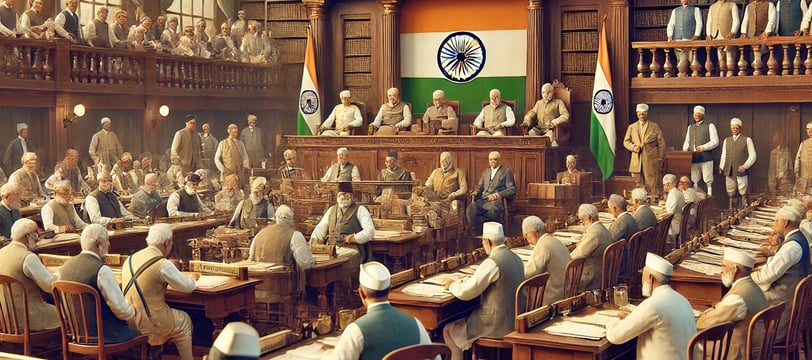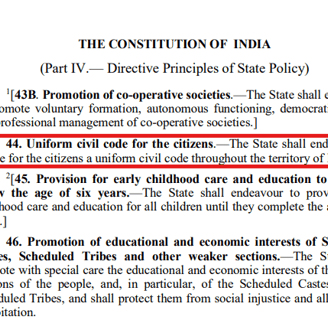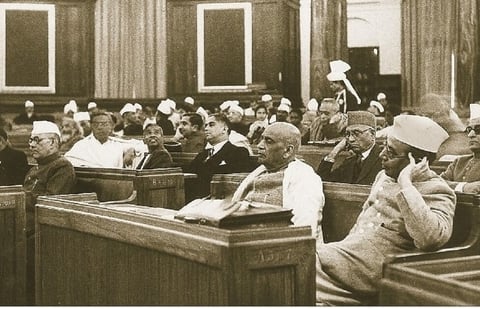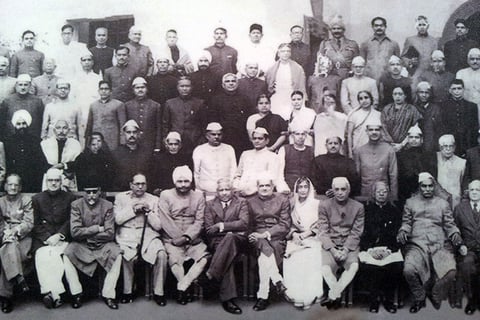Uniform Civil Code in Constituent Assembly
CURRENT AFFAIRS
Ashwin Sundaresh
10/3/20244 min read


The Olympic fever had taken hostage of billions of sport enthusiasts around the world in the months of July and August. But when Angele Carini refused to fight against her opponent, who identified as a trans person, it sparked a new controversy with backlashes flowing from all directions. The new liberal order of the world, which claims to be moving in the direction of ‘inclusion’, was once again caught pants down thanks to its hypocrisy.
The liberal order, which has batted for women’s and trans rights, failed to realize that forming and controlling the narrative can only take you so far, like in the case of Carini. Imane Khelif, who claimed to be a trans woman, is a biological male, and in a sport like boxing, which demands immense physical strength, she turned the bout into a lopsided contest right away.
Similarly, when a 77-year-old democratic country has allowed 'special’ privileges to its minority but has continuously asserted the law of the land on its majority, there comes a time when the majority demands equal civil rights to all the citizens, and time is now. We must not forget the idea of India has been on the core ideals of sovereignty, justice, equality, fraternity and liberty for all the citizens.
The fathers of the Indian constitution were aware of the diversity of the nation and proposed a single identity by having the same civil laws for all its citizens. It is to be noted that Hansal Mehta, who is often hailed to be a champion of women's rights, was fully in support of UCC. Several other members had other ideas as they were against the implementation, claiming that this would disrupt the religious fabric of the country. The Hindus showed the way for others to follow as they whole-heartedly accepted the Hindu Code Bills in 1955–56, which spoke in length about marriages, succession, and adoptions, among many other things. The Hindus, who have often been hounded to be “regressive” and "orthodox,” were the most accommodating, as they accepted it with both hands.
On the contrary, the minorities, especially the Muslims, have been clear on this front that there can never be a national identity that supersedes religious identity. The same arguments were made by the Muslim representation in the Drafting Committee discussion, where they dismissed the pro-UCC voices by admitting that their religion doesn’t allow for marriage to be a legal contract, substantiating their loyalty to the book.
Looking at the arguments put forth by those who opposed the inclusion of the Uniform Civil Code, M. Muhammad Ismail, who was the first to propose a dilution to the UCC, claimed that the secular fabric idea of the state has nothing to do with religious or personal laws, but conveniently forgets that the partition of India was solely on religious lines. The idea of India has always been built under the foundation of Hindu society, which has been tolerant and accommodating of people from other religions.
Mahboob Ali Baig added fuel to the fire by strongly opposing the idea of having the same laws for marriage or inheritance. He opined that the Muslims have followed the same customs for 1300 years and would refuse to abide by the new laws. On the other hand, after the introduction of Hindu Bills in the 1950s, the tradition, practices of Hindu marriages have not been tampered with, but an additional step of registering the marriage was agreed upon by 80% of the population. The same Ali Baig, who spoke in length about majority protecting minority rights, forgets that it is not a one-way street. When the state didn’t intervene with belief systems or practices but proceeded to add an additional document for legality purposes, the likes of Baig cried foul for no reason.
Hussain Imam, who seemed to be one of the saner voices, conceded that the application of a uniform law is a very desirable thing only when the poor and the lower strata of society are uplifted, implying that UCC was inevitable.
The debate was taken over by the pro-UCC voices, who were ready to counter the claims made by those who opposed it. K M Munshi was in no mood to mince his words as he explained that the house had arrived at a conclusion where they had a right to frame laws that fell in the secular spectrum, but at the same time not affecting the personal laws. He stressed that the laws of inheritance and succession had nothing to do with religion, and it is important to have the same law applied to each citizen, which in turn brings down gender inequality. He also added that continuing the personal laws will only widen the gap between communities, which is a dangerous precedent to set. He quoted the examples of Muslim majority countries like Syria and Syria where they have enforced Uniform Civil Code without considering the personal laws of the minorities as holier than thou.
Alladi Krishnaswami Ayyar was quick to support his learned friend by adding that the country was already shredded into pieces, thanks to the creation of East and West Pakistan. The difference in civil laws will not only pit one community against another, but also derail the development of an independent India.
The debate concluded with Dr. B. R. Ambedkar stating that there were no ideas of personal laws to be done away with, or that the state has any power to impose itself on the individual against his or her personal rights. In the end, the amendments proposed for Article 35 were not included and were adopted as is, which were later moved to Directive Principles of State Policy. The new Article 44 thus reads, “The state shall endeavor to secure for the citizens a uniform civil code throughout the territory of India.”
Even after 77 years of independence, the state is still skeptical of bringing in a Uniform Civil Code in the country, despite most of its citizens strongly propagating for its implementation.






References:
Debates in the Constituent Assembly and thereafter on Uniform Civil Code, Lekshmi Parameswaran.
UCC-Part-1-Constitutional History, Centre for Law and Policy Research.
